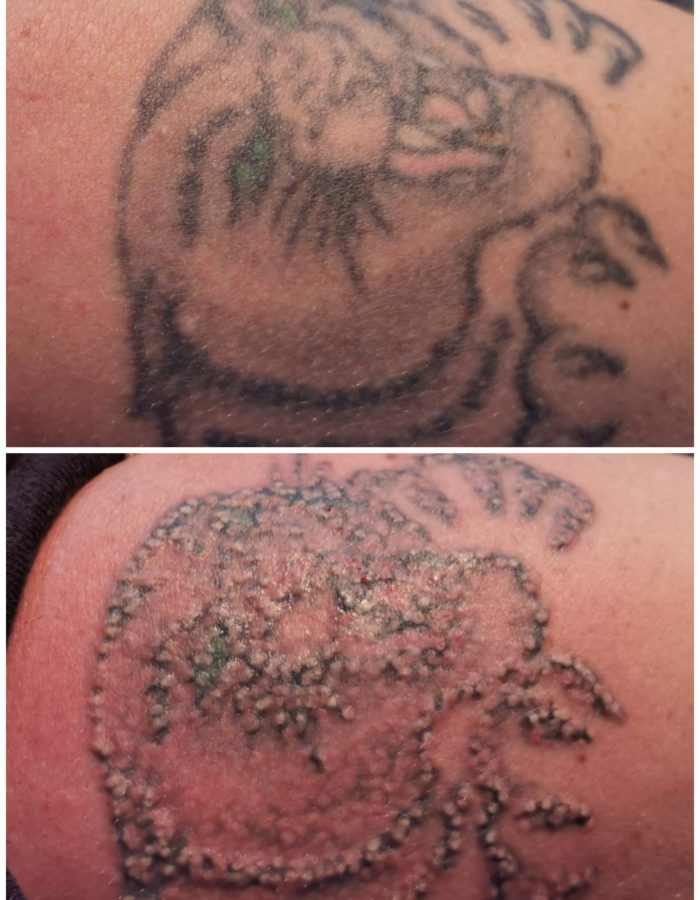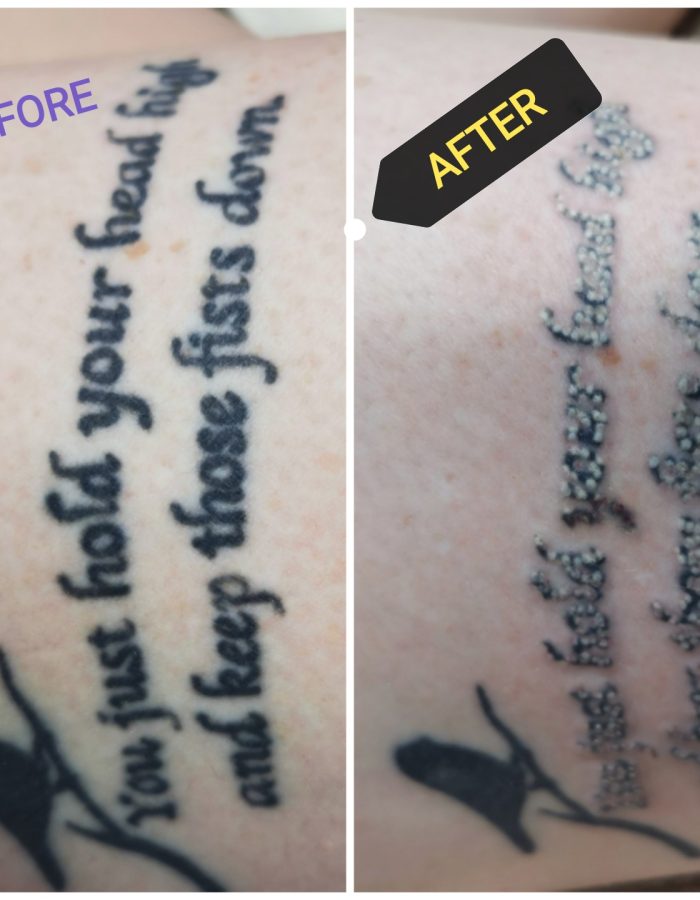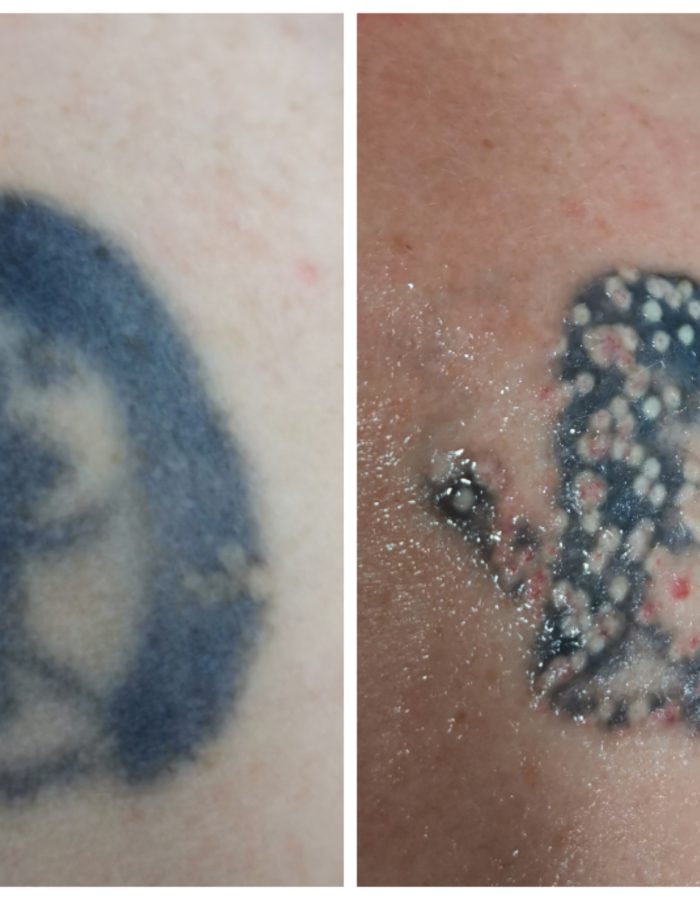



Laser Tattoo Removal
All types of tattoos can be removed using a permanent tattoo removal process i.e. laser tattoo removal. This will include tattoos done by professionals and accidental tattoos that are caused by bruising and injury of the skin. Coloured tattoos are also removed, although yellow or green tattoos pose a greater challenge when it comes to removal and subsequent permanent tattoo removal treatments may be necessary.
